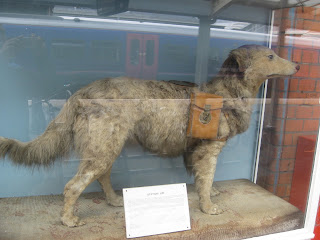How history is perceived depends
upon how a society is impacted by it. Although the German army collapsed at the
end of the First World War in 1918 and the country was subsequently forced to
surrender, monuments to soldiers are more acceptable than from the Second World
War. Nevertheless, such monuments are not often easily found and tend to be in
obscure places. I find it interesting that they regularly do not portray heroic
soldiers scaling barbed wire.
 |
| Triariis Bello Occisis |
On a small street adjacent to
Zoologischer Garten train station, Jebenstrasse, the Triariis Bello Occisis
Monument honors fallen reserve soldiers and officers of the army. It is as if the statue sits behind the station
because it is on the opposite side of the main square. The monument is away
from the gaze of tourists and travelers. Knowing the background to the Latin
phrase makes the monument all the more interesting and poignant. The monument
is designed to honor third-tiered soldiers (hence the derivation of the word triarii), the last and most decisive portion
of the army, generally made up of the oldest and most experienced troops. They
were seen as the last resort.
Not too far away, the monument
to the Faithful Dead of the XXII Reserve Corps stands in front of the main
building of the Universität der Kunst on Bundesalle. Yet again, although more
readily visible the monument is away from the normal tourist track. The
soldiers are honored, just not ostentatiously.
 |
| Universität der Kunst |
It is sometimes difficult for
American students to understand that the outcomes of war do not always have the
same meaning for everyone. Being on the losing side of a war demands a
different type of memorialization. Countries that were occupied (as
you will see in coming posts), often have different types of
monuments and memorials. But certainly, not every society sees war as noble or
normal.





